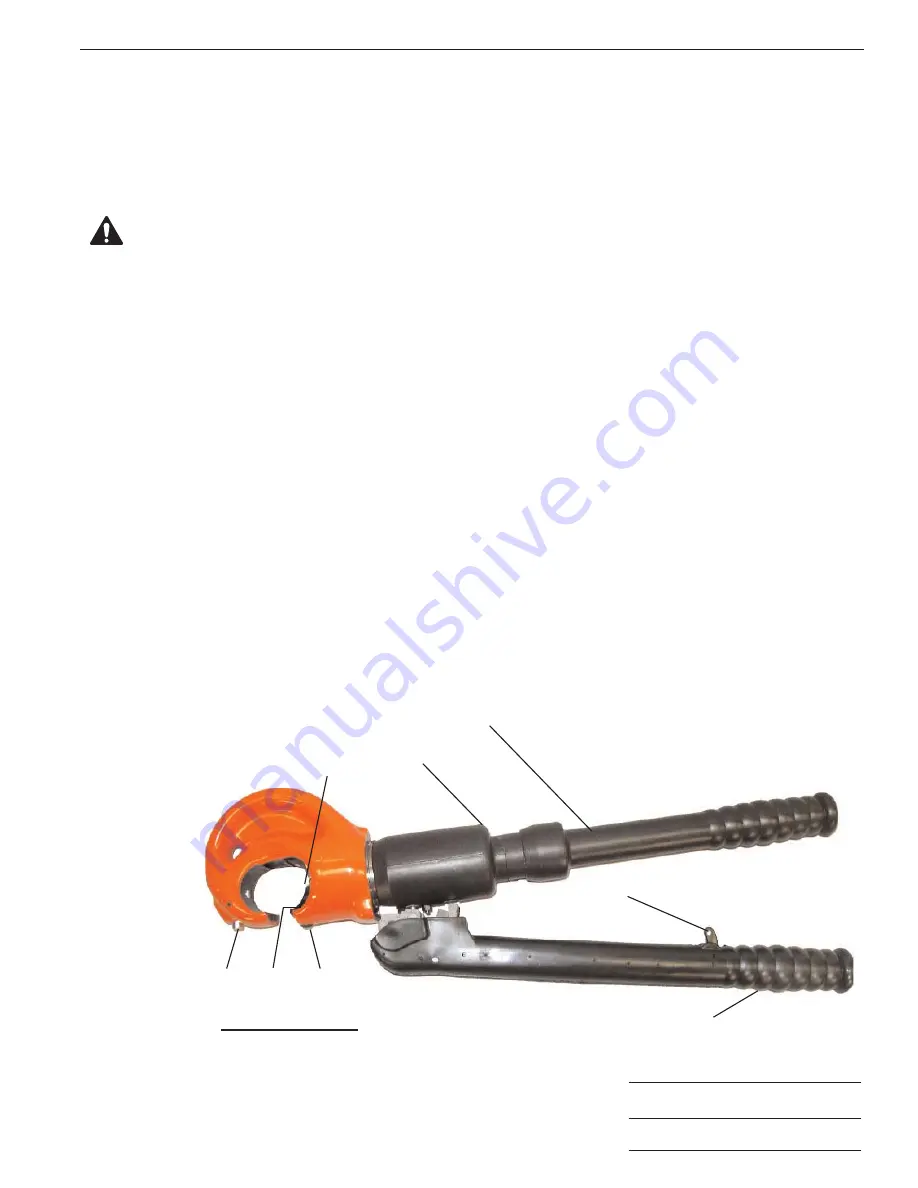
Operating Instructions and Parts List
Form No. 1000026
TROUBLE SHOOTING
Sheet No.
3 of 6
Rev
Date: 09 Feb 2004
If the ram will not extend completely, it will generally be found that there is an insufficient amount of oil in the
compressor's hydraulic system. This trouble can also be caused by faulty pump plunger packing or release valve
packing by the pressure release valve being stuck open, or by foreign matter preventing the release valve balls from
seating properly. Faulty packing will usually be detected by excess oil leakage around the pump plunger. A stuck
valve ball can usually be freed by rapping the tool sharply.
Avoid damage to other parts in the process of rapping. Foreign matter can frequently
be flushed from a valve seat by pumping very rapidly with abrupt strokes.
If the dies will not close and pumping is difficult, check the die number to make certain the proper size die is being
used on the accessory. If the dies will not close and pumping becomes easier, usually additional oil is needed in the
compressor. There is also the possibility that the pressure release valve balls are not seating properly.
If the ram will not retract completely, it will generally be found that there is too much oil in the compressor. Drain
enough to permit complete retraction. If the ram will not retract and the oil reservoir is not full, the ram is likely being
held by a deformed washer.
A small amount of leakage is desirable around the ram; pump plunger, and pressure release valve plunger to
lubricate these parts. If enough leakage occurs to cause the oil to run, the packing should be replaced.
If rotating the reservoir handle will not advance the ram to within a half-inch of closing the dies, additional oil is
needed in the compressor. If rotating the handle will not move the ram, either the ram is being held by a deformed
washer or the reservoir piston has been deformed and is seizing on the reservoir walls. Such deformation occurs only
if the reservoir handle is screwed tight against a fully advanced ram and the pressure release or safety valve is
operated. The momentary pressure surge against the face of the reservoir piston may cause it to buckle and wedge
against the wall of the reservoir. No purpose is served in screwing the handle tight and doing so abuses the tool.
If the dies do not lock in position, the action of the retaining pins is probably restricted by dirt. Clean and oil these
parts.
If it is difficult to unlock the die-haves, the die release buttons should be lubricated. The die retaining pin set screw in
the C-head above the die release button is staked in position. To further tighten this screw will make it difficult or
impossible to release the die.
CAUTION
6
4
7
3
5
8
2
1
1. Top Die Release Button
2. Bottom Die Release Button
3. Piston Guide Screw
4. Piston
5. Reservoir
6. Reservoir Handle
7. Release Striker
8. Pump Lever
Illustration





























